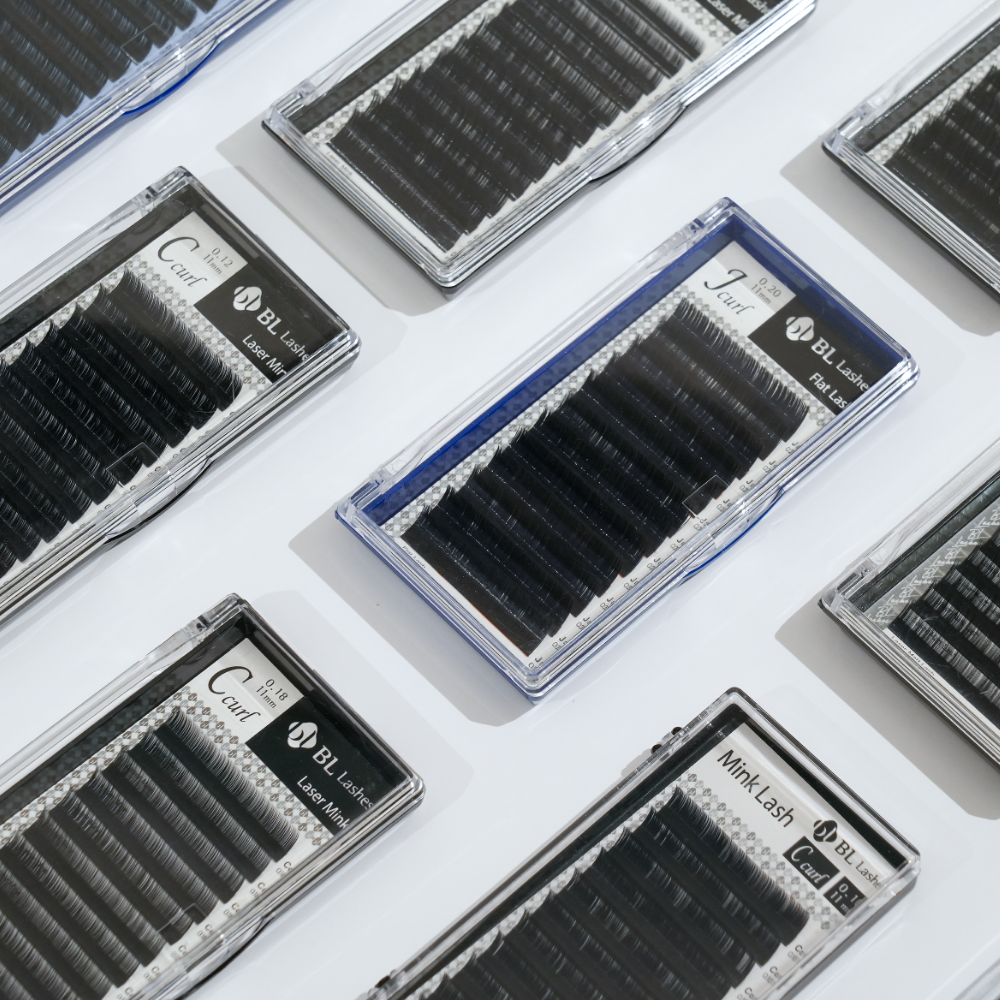Eyelash extension glue plays such a vital role in the successful application and retention of eyelash extensions.
To really conquer your lash game, you need to know as much as possible about eyelash extension adhesive. Also, from time to time, some customers will want to know more about the properties and dangers of the lash glue, and it is your responsibility to answer those questions with confidence.
In this article, we will share the valuable inside knowledge we have gathered by working over 15 years as a lash extension supplier.
Eyelash extension glue ingredients - What's in your lash glue?

Cyanoacrylate: One that makes fast drying glue
Cyanoacrylate gives the lash glue its unique curing property. This is the material that ensures the adhesive dries in a matter of seconds and holds the lashes firmly in place for several weeks.
Cyanoacrylate is a major component of all professional eyelash extension glue and is the base material for all fast-curing glue.
Fast drying lash extension glues from BL Lashes

Cyanoacrylate is in all eyelash adhesives, even in the lash extension glue for sensitive or allergic eyes. What many people don't know about is that there are 5 types of Cyanoacrylate with different characteristics.
Out of those five cyanoacrylates, Ethyl cyanoacrylate is the most commonly used. Its drying time is fast, and the adhesion is strong, but the fume, odor, and irritation can be quite heavy for some lash clients and it can cause allergy to eyelash extensions.
Is there cyanoacrylate free eyelash glue?
The answer is no. Currently, all lash extension glues in the market contain Cyanoacrylate. For sensitive customers, choose a lash glue with a softer cyanoacrylate such as Alkoxy-2.
Lash extension glues with Alkoxy-2 Cyanoacrylate from BL Lashes

PMMA: One that makes long retention
Simply put, PMMA or poly (methyl methacrylate) is the agent that forms a long-lasting, solid bond. Thus, it is PMMA that ensures that the lashes remain in place for a long time.
PMMA is used in an eyelash extension adhesive to reinforce cyanoacrylate and thus to adhere to an eyelash extension.
When cyanoacrylate forms together with poly (methyl methacrylate), they create the most important properties of eyelash extension adhesives:
1. rapid drying
2. immediate bonding to the lashes
3. a long-lasting, strong holding bond, which ensures several weeks of retention.
In summary, cyanoacrylate ensures rapid curing of the lash glue, and PMMA provides its longer-lasting adhesion.

Carbon Black: One that makes the deep dark color
The carbon black in the lash extension glue is responsible for the deep black color of the adhesive. This ingredient is only used in black adhesives and is obviously absent in clear lash adhesives. Transparent glue is ideal for customers who are allergic to carbon.
Use clear lash glue for color lash extensions

FAQ
Here are the most frequently asked questions by our customers regarding the property of lash extension glue.
What does Latex-Free in lash glue mean?
Simply put, Latex is natural rubber. A small amount of latex in lash glue helps to increase the resistance of the adhesive to water and oil, which in turn helps to create longer retention. However, latex is known to cause allergic reactions in some people, and when it happens, it can be quite dangerous.
These days, most of the lash extension suppliers exclude latex from its ingredient list to ensure client safety.
Some of BL adhesives contain, instead of latex, an elastomer (synthetic rubber), which is a laboratory-made rubber. The elastomer does not cause latex allergy but provides excellent viscosity, elasticity, and durability.

Is lash extension glue Formaldehyde-free?
This has probably been the most talked-about topic in the lash industry. Our answer is this: technically speaking, all the eyelash extension glue contains formaldehyde.
Formaldehyde is NOT an ingredient but it is formed as a by-product during the production process by the decomposition of other components in the eyelash extension glue.
A completely “formaldehyde-free” lash extension adhesive does not exist. Also, ultra-low amounts of formaldehyde naturally occur as the adhesive degrades over time. The formaldehyde level in BL adhesives has not been measurable as it is below the lowest detectable level of lab tests that measure formaldehyde.
Exposure to small amounts of formaldehyde produced when using eyelash extensions is not harmful to health.
For formaldehyde to be toxic to humans, it must be inhaled in large quantities over a long time, and that is not possible during a regular eyelash extension application process. To read more about formaldehyde and its potential health effect, please read this page.
As an eyelash technician, you will be inhaling it over many hours every day, and you must ensure a proper ventilation system in the lashing room. If you are particularly sensitive, we advise you to wear a respiratory protective mask.
Conclusion:
Knowing how to choose the right lash extension glue for your climate, how to store the glue, how to choose the lash glue for your sensitive clients can make or break your lash business.
Before buying in eyelash extension glue, be sure to ask your glue manufacturer for an MSDS (Material Safety Data Sheet) to be sure of the ingredients and their composition in the product.
The ingredients of lash extension adhesives can vary dramatically from product to product, so be vigilant when inspecting and examining the components. Be sure to take notes on which products are best for your skill level and customers based on their unique needs and sensitivities.
This blog is protected by copyright law. Reproduction or rewriting without permission is strictly prohibited.
Read More:
Having retention issues since COVID-19?
How long does eyelash glue last?
A complete guide: Eyelash extension glue and Humidity
How to Keep Your Lash Salon Germ and Bacteria Free?
Make sure to follow our Instagram for more inspiration: BL Lashes on Instagram

















